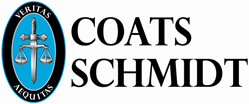Press Release | Digital Journal |
“RealtyTrac® (www.realtytrac.com), the nation’s leading source for comprehensive housing data, today released its U.S. Foreclosure Market Report™ for September and the third quarter of 2013, which shows foreclosure filings — default notices, scheduled auctions and bank repossessions — were reported on 131,232 U.S. properties in September, a 2 percent increase from the previous month but a 27 percent decrease from a year ago.
September was the 36th consecutive month with an annual decrease in U.S. foreclosure activity, a downward trend that started in October 2010 when lenders and servicers were accused of improperly signing off on foreclosure documents with a practice dubbed robo-signing.
September numbers helped drop third quarter foreclosure activity to the lowest quarterly level since the second quarter of 2007. There were a total of 376,931 U.S. properties with foreclosure filings in the third quarter of 2013, down 7 percent from the previous quarter and down 29 percent from the third quarter of 2012 — the biggest annual decrease since the second quarter of 2011. One in every 348 housing units had a foreclosure filing during the quarter.
High-level findings from the report:
- U.S. foreclosure starts in the third quarter were at a seven-year low. A total of 174,366 U.S. properties started the foreclosure process for the first time during the quarter, down 13 percent from the previous quarter and down 39 percent from a year ago to the lowest level since the second quarter of 2006.
- Third quarter foreclosure starts decreased from a year ago in 38 states including Colorado (down 71 percent), Arizona (down 63 percent), California (down 59 percent), Illinois (down 56 percent), and Florida (down 52 percent).
- Third quarter foreclosure starts increased from a year ago in 11 states, including Maryland (up 259 percent), Oregon (up 252 percent), New Jersey (up 53 percent), Connecticut (up 52 percent), Nevada (up 36 percent), and New York (up 25 percent).
- Third quarter bank repossessions (REO) decreased 24 percent from a year ago but were up 7 percent from the previous quarter. A total of 119,485 U.S. properties were repossessed by lenders in the third quarter, putting the nation on pace for close to half a million total bank repossessions for the year.
- The quarterly increase in REOs nationwide was driven by quarterly increases in 26 states, including New York (up 65 percent), New Jersey (up 64 percent), Illinois (up 44 percent), Virginia (up 36 percent), Connecticut (up 34 percent), Indiana (up 30 percent), Nevada (up 29 percent), and California (up 19 percent).
- Overall foreclosure activity in September decreased from a year ago in 33 states, but was up from a year ago in 16 states, including Maryland (up 230 percent), Nevada (up 97 percent), Connecticut (up 69 percent), New Jersey (up 55 percent), Pennsylvania (up 34 percent), and New York (up 22 percent).
- September foreclosure activity decreased from a year ago in 144 of the 209 metro areas tracked in the report (69 percent), but increased from a year ago in 64 metros (31 percent), including Baltimore (up 381 percent), Las Vegas (up 109 percent), Raleigh, N.C. (up 97 percent), Hartford, Conn., (up 74 percent), Washington D.C., (up 52 percent), Philadelphia (up 32 percent), and New York (up 25 percent).
“The September and third quarter foreclosure numbers show a housing market that is haltingly returning to health,” said Daren Blomquist, vice president at RealtyTrac. “In a healthy housing market foreclosures are rare but streamlined while still protecting the rights of the homeowner. While foreclosures are clearly becoming fewer and farther between in most markets, the increasing time it takes to foreclose is holding back a more robust and sustainable recovery.
“The sharp jumps in foreclosure activity in some local markets may come as a surprise to some,” Blomquist added. “These spikes in activity demonstrate that while millions of distressed homeowners have been pulled back from the precipice by foreclosure prevention programs over the past several years, once those programs expire or are exhausted, a percentage of these troubled homeowners are still susceptible to falling into foreclosure. In addition even slight economic downturns at the local or regional level can push these homeowners hanging on by a thread over the edge.”
Read more
